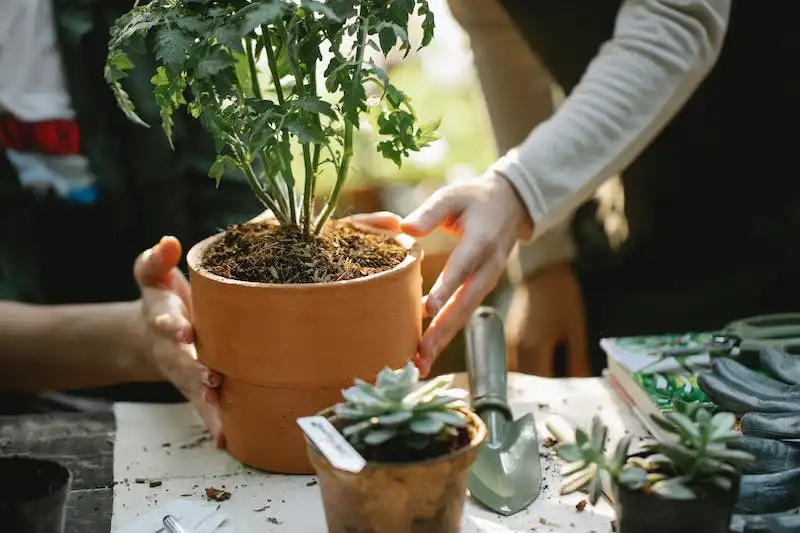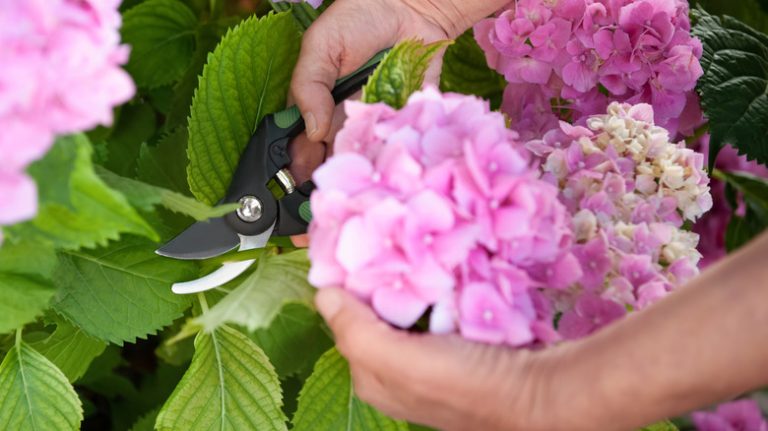The U S Forest Service is a government agency that oversees the management and protection of the country’s national forests and grasslands. Its primary mission is to ensure that these public lands thrive and are available for the use and enjoyment of current and future generations.
This article will take a closer look at the U S Forest Service and the important role it plays in preserving our natural resources. From managing timber sales to promoting outdoor recreation, the Forest Service heads a wide range of activities that contribute to the sustainable management of our forests.
If you’re interested in learning more about the Forest Service and the work it does, you’ll find plenty of information here. From the basics of forest management to the details of specific programs and initiatives, this article will provide you with a comprehensive overview of the U S Forest Service and its important role in protecting our natural landscapes.
So sit back, relax, and get ready to dive into a world of trees, trails, and forest ecosystems. Whether you’re a seasoned outdoor enthusiast or a city dweller curious about the great outdoors, this article will offer insights and tips for exploring our nation’s forests, no matter your experience level.
How to Grow and Care for Common Yarrow
Common yarrow (Achillea millefolium) is a perennial plant that commonly grows in gardens and open fields. It is easy to grow and care for, making it a favorite among beginners and experienced gardeners alike. Here are some steps to help you grow and care for common yarrow:
Planting: Common yarrow prefers well-drained soil and full sunlight. It can tolerate a wide range of soil conditions, from sandy to clayey, and even neutral pH levels. Choose a location that receives at least 6 hours of direct sunlight daily.
Soil Preparation: Before planting, prepare the soil by removing any weeds or grass. Spruce up the soil by adding some organic matter, such as compost or well-rotted manure, to improve its fertility.
Sowing Seeds: Common yarrow can be grown from both seeds and plants. If you are sowing seeds, sprinkle them on the soil surface and lightly press them down. Keep the soil moist until the seeds germinate, which usually takes about two weeks.
Watering: Once the yarrow plants are established, they are quite drought-tolerant and don’t require frequent watering. Water them deeply when the top inch of soil is dry. Avoid overwatering, as it can lead to leggy growth and root rot.
Fertilizing: Common yarrow doesn’t require much fertilizer, as it can thrive in poor soil conditions. However, if you want to give it a boost, you can apply a balanced fertilizer once every few weeks during the growing season.
Staking: Yarrow plants generally don’t require staking, as they have sturdy stems. However, if you notice that the plants are bending or falling over, you can stake them to provide support.
Disease and Pest Control: Common yarrow is typically resistant to most diseases and pests. However, if you notice any signs of fungus or insect infestation, treat them immediately with suitable organic products. Read the label instructions carefully before using any products.
Pruning: Trim back the yarrow plants after they finish flowering to encourage a second bloom. You can cut back the flowering heads by half, or even completely if you prefer a tidier appearance. Regular pruning also helps prevent self-seeding and spreading.
Repotting: If you have potted yarrow plants, you can repot them every couple of years to refresh the soil and prevent overcrowding. Use a well-draining potting mix and plant them at the same depth as they were in the previous pot.
Uses: Yarrows are not only beautiful flowering plants, but they also have some medicinal uses. Their leaves and flowers have an aromatic, bitter taste and can be brewed into a tea. They are often used as a natural remedy for digestive issues, common cold, and as a mild sedative.
Common yarrow is a versatile plant that can add beauty and fragrance to your garden. Its easy care and low maintenance make it an excellent choice for both beginner and experienced gardeners. So, give it a try and enjoy the beautiful blossoms of common yarrow in your garden!
Common Yarrow Care
Common yarrow, also known as Achillea millefolium, is a versatile perennial plant that is widely grown for its ornamental value. It is native to North America and is commonly found in open fields, meadows, and roadsides. Common yarrow is known for its aromatic foliage and clusters of small, white or yellow flowers that bloom from late spring to early autumn.
When choosing a location to plant common yarrow, it is important to select a spot that receives full sunlight. This plant thrives in well-drained soils and can tolerate a wide range of conditions, including sandy, loamy, and clay soils. It is also drought-tolerant and does not require frequent watering.
When planting common yarrow, it is recommended to space the plants about 10 to 20 inches apart to allow for proper airflow. This will help prevent the development of powdery mildew, a common fungus that can affect the plant’s growth. It is also important to trim the plant regularly to promote bushier and more compact growth.
Common yarrow is a low-maintenance plant that does not require much care. However, dividing the plant every 2 to 3 years can help rejuvenate its growth. This can be done by digging up the plant and dividing the root clumps into smaller sections, which can then be replanted in a new location. Additionally, deadheading the spent flower heads can encourage the plant to continue blooming throughout the season.
Common yarrow is not only an attractive ornamental plant, but it also has several practical uses. Its leaves and flowers can be used to make teas, tinctures, and salves, and it is also known for its medicinal properties. Some gardeners even use common yarrow as a natural pest deterrent, as its strong scent can discourage rodents and other pests from entering the garden.
To ensure that your common yarrow plant stays healthy, it is important to keep an eye out for any signs of disease or pests. Powdery mildew is a common issue that can affect common yarrow, especially in humid environments. If you notice any white, powdery substance on the leaves, it is important to take action immediately to prevent the spread of the fungus.
In summary, common yarrow is a versatile and easy-to-grow plant that can add beauty to any garden or landscaping. With proper care and maintenance, this perennial plant can thrive for many years and bring joy to both novice and experienced gardeners alike.
Light
Light is an essential factor for the growth and development of plants. Different plants have different light requirements, and it is crucial to choose the right amount of light for your plants to thrive.
When it comes to gardening, more is not always better. Some plants do well in shade or partial shade, while others need full sun to flourish. Before planting, it is important to read the suggested light requirements for each type of plant.
If you choose to grow plants that require full sun, make sure they receive at least six hours of direct sunlight daily. If you have a shady spot in your garden, plant shade-tolerant plants such as ferns or hostas. Remember that the conditions can vary depending on your location, so do some research about the light conditions in your area.
Invasive species can also thrive in certain light conditions, so be cautious when choosing plants. Some invasive plants can tolerate a wide range of light conditions and may spread rapidly if not controlled.
It is also important to consider the light conditions inside your home. If you are planning to keep houseplants near windows, be aware that the temperature near windows can be higher or lower than the rest of the room, depending on the season. Keep an eye on your plants and make sure they are not exposed to extreme temperatures.
Overall, choosing the right amount of light for your plants is essential for their growth and well-being. Take into consideration the light requirements of each plant and provide them with the conditions they need to thrive.
Soil
When it comes to planting and growing, the soil is the foundation for success. Without the right soil, your plants won’t thrive and blossom. Here are some tips for creating a soil environment that will help your plants grow and thrive:
| 1 | Choose a well-drained soil that is rich in organic matter. This will provide the nutrients and moisture that your plants need. |
| 2 | Consider the type of plant you are growing and the type of soil it prefers. Different plants have different soil requirements. |
| 3 | Before planting, prepare the soil by loosening it with a garden fork or tiller. This will help the roots to penetrate the soil and establish themselves. |
| 4 | If you are starting plants indoors, use a potting soil mix that is formulated for container gardening. This will provide the necessary nutrients and drainage for healthy plant growth. |
| 5 | When planting outdoors, choose a site that receives the appropriate amount of sunlight for the type of plant you are growing. Most plants prefer a full sun environment. |
| 6 | Water your plants regularly, but avoid overwatering. Too much water can lead to root rot and other fungal diseases. |
| 7 | Feed your plants with a balanced fertilizer to provide them with the nutrients they need to grow and bloom. |
| 8 | Keep an eye out for pests and diseases, and treat them promptly if needed. Regularly inspect your plants for any signs of trouble. |
| 9 | Consider using organic methods to discourage pests and diseases. These methods are safer for the environment and for you. |
By following these tips, you can create a soil environment that will help your plants thrive and blossom. Happy gardening!
Water
When it comes to the water requirements of plants, understanding the right temperature and amount of water they need is crucial for their growth and development. Here are some tips to help beginners choose the right watering methods:
- Get to know your plants: Each plant has different water needs, so it’s important to research and gather information about the specific care requirements of the plants you’re growing.
- Grow water-wise plants: Choosing plants that are native to your area or drought-tolerant can greatly reduce your water usage.
- Prevent water wastage: Avoid overwatering plants, as it can lead to root rot and other issues. Make sure to check the soil’s moisture level before watering.
- Water thoroughly: When watering, make sure to water deeply and slowly, allowing the water to penetrate the soil and reach the plant’s root ball. This will encourage deep root growth and help the plants thrive.
- Watch for signs of dehydration: Plants that are not getting enough water may show signs such as wilting leaves, dry stems, and yellowing foliage. If you notice these signs, increase the frequency or duration of your waterings.
- Choose well-drained soil: To prevent waterlogging, make sure the soil has good drainage. If the soil retains too much water, it can lead to root rot and other plant diseases.
- Consider using mulch: Mulching around plants can help retain moisture in the soil, reducing the need for frequent watering.
Water is essential for the health and survival of plants. By following these watering tips, you can ensure that your plants receive the right amount of water to thrive and flourish.
Watering is a care-free task that doesn’t have to be daunting. With a little knowledge and attention to detail, you can keep your plants hydrated and healthy.
It’s important to note that water can also be a source of pests and diseases. For example, overwatering can create a favorable environment for fungal diseases to develop. To prevent infestations and diseases, water the base of plants and avoid getting the leaves wet. Additionally, be cautious when watering plants that are prone to rot, such as astilbe and yarrow.
Water can also be harmful to pets and wildlife if they consume water from plant saucers or puddles that contain toxic products. Make sure to water your plants in a way that prevents access to standing water for your pets and other animals.
Overall, understanding the water needs of your plants and implementing proper watering techniques will contribute to their overall health and vitality.




